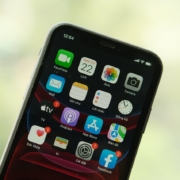How to Market your App
So, you’ve finally built your app and are ready to usher it into the world? Congratulations. But unless you aggressively market your app to the right audience, it will get lost in the sea.
There are 3.48 million apps in Google Play and 3.74 million apps in the App Store. The number of mobile apps is staggering, and it’s increasing daily. So, if you sit around thinking that app users will migrate to your app, think again. Competition is fierce. That’s why it’s advisable to have an app user acquisition strategy before app launch and treat it as you would any traditional product or service launch.
This post provides a compilation of the best ways to promote your app. This list is in no specific order, and so you should pick the strategies that best fit your existing marketing plan. Start with a handful of these strategies, or test what works for you and what doesn’t.
1. Define your landing page
Provide a short and clear introduction to your app – one sentence is sufficient. You can get an example from Tinder’s landing page to get an idea of a succinct introduction. The landing page directly promotes your business goals and increases conversions. In addition, the landing page will generate data and insight and improve paid search campaigns.
2. Start a blog
Regular updates on a topic that exclusively focuses on your core product or service make you a niche expert. By blogging, you build a small community of like-minded individuals who will act as ambassadors for your app, promoting adoption and use. The blog will manage your online brand identity and trust, enable you to connect with new people, and build an audience for your app.
3. Family and friends
Look around and identify the people you surround yourself with. Are there family members, friends, or acquaintances that would enjoy using your app for whatever purposes? If yes, approach them. They are already part of your inner circle that will enable your app to grow. Now, think about the exponential potential of this inner circle. Each one of your family and friends knows about at least five people. Get this network to be part of your early adopters. This network will spread the word and build a foundation for your app’s user base.
4. Use social media
It’s advisable to use social media but do it wisely. Copy pasting a link and sharing it to multiple profiles is not enough. Be interesting. Engage your audience. Tease. Make yourself share-worthy and click-worthy. Always be creative about your intro text. Finally, ensure that different social media networks – Facebook, Instagram, Twitter, and Pinterest – are integrated to share content across these platforms. Cross-platform sharing enhances visibility.
5. Create a video intro to your app
Creating a commercial video for your app should only be an option if you’ve proven your app’s concept, you’ve gained some traction, and you’re sure you are a winner. You don’t want to spend a lot of money on an app that has changed three times since it was launched.
6. Reach out to influencers
Marketing your app can extend beyond your usual field of influence. Oftentimes, these foreign connections and collaborations are what your company needs. Developing authentic, trustworthy, and mutually beneficial relationships with influencers will go a long way in promoting your app. Influencers are a group of people with the power to influence the buying and engagement potential of a certain group of people.
Business owners and developers reaching out to influencers and bloggers should be careful to present content that’s only relevant to the influencers and their target audience. While some marketers offer monetary compensation in exchange for the influencer’s promotion, it’s advisable to look for influencers who truly value your company and your content. Let influencers know that you are creating or have already built an app. Ask if you can get some time with them to gather feedback; this will go a long way in promoting your app.
7. Mobile website
If you have an existing website that’s fully functional and mobile-friendly, this can be one of the greatest assets in promoting your app. At one point or another, your clients or anyone interested in your services will find their way to your website. When they do, they must know that you have an app. Including your app in your site could mean sectioning off a part of your website exclusively for the app. The corner of the screen or the middle of the website would do. While this approach can bring in more downloads, we recommend leveraging an alternative approach. Instead of placing it permanently or temporarily on your site, have a pop-up page display whenever a visitor explores your site.
8. Pitch tech blogs
Pitching tech blogs is a tough marketing approach. While you think you have an awesome app launching tomorrow, some tech blogs might be less impressed. However, don’t despair. Make a small list of contacts and email them your perfect pitch, and hope for the best.
Tip: Don’t stalk the editors, they receive tons of pitches regularly, and if they’re interested in your app, they will get back.
9. Ask for app reviews
Besides the big tech blogs, there are tons of other app review websites. For example, Feed My App, AppStorm, 148App, and AppAdvice have solid app review systems in place, providing visibility and creating audiences for new apps. By getting your app reviewed by app review sites, you achieve two goals. First, you increase your app brand awareness because any app at the beginning of its lifecycle is not known as it needs a lot of media placement to be discovered and downloaded by users. Secondly, app reviews help an app be ranked higher in Google Play, because of multiple inbound links from review sites pointing to an app’s page on the store.
10. Contact writers in the niche
This is one of the most effective techniques of mobile app marketing. If you find people who care to write about your niche, they might want to write about your incredible solution. Again, don’t be pushy, you don’t want to burn bridges with influential writers.
Tips to Market your App
When marketing your app, it’s advisable to practice the following tips to achieve the highest conversions and downloads:
- App Store Optimization ASO. Google Play and Apple App Store prioritize certain apps in search results based on several ranking indicators – tags, ratings, screenshots, download data, and app title. The most important ranking factor in App Store Optimization is the app’s title. When it comes to app store optimization, it’s advisable to fill all the fields with the relevant details when submitting your app to the app store.
- Facebook Marketing. Although one of the ways of acquiring mobile app installs is through the clever use of the Facebook advertising platform, few mobile marketers are talking about this. It’s advisable for app promoters and marketers to use a combination of sponsored stories and page-promoted posts targeted to mobile new feeds. In addition, use a power editor tool like Qwaya, and combine URL posts and high-res images.
- Promoted Tweets. Similarly, promoted tweets are another way of driving mobile app downloads when set up correctly. Start with a small budget testing off different keyword segments and scale-up on what drives the best-per-cost acquisitions.
Contact NS804 for inquiries on how to develop, deploy, and market your mobile app.










Leave a Reply
Want to join the discussion?Feel free to contribute!